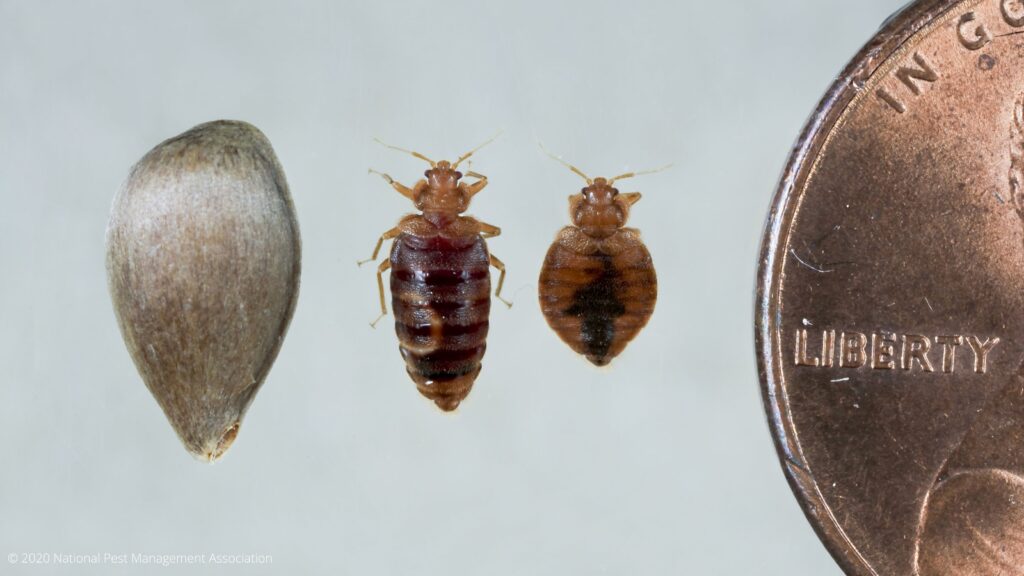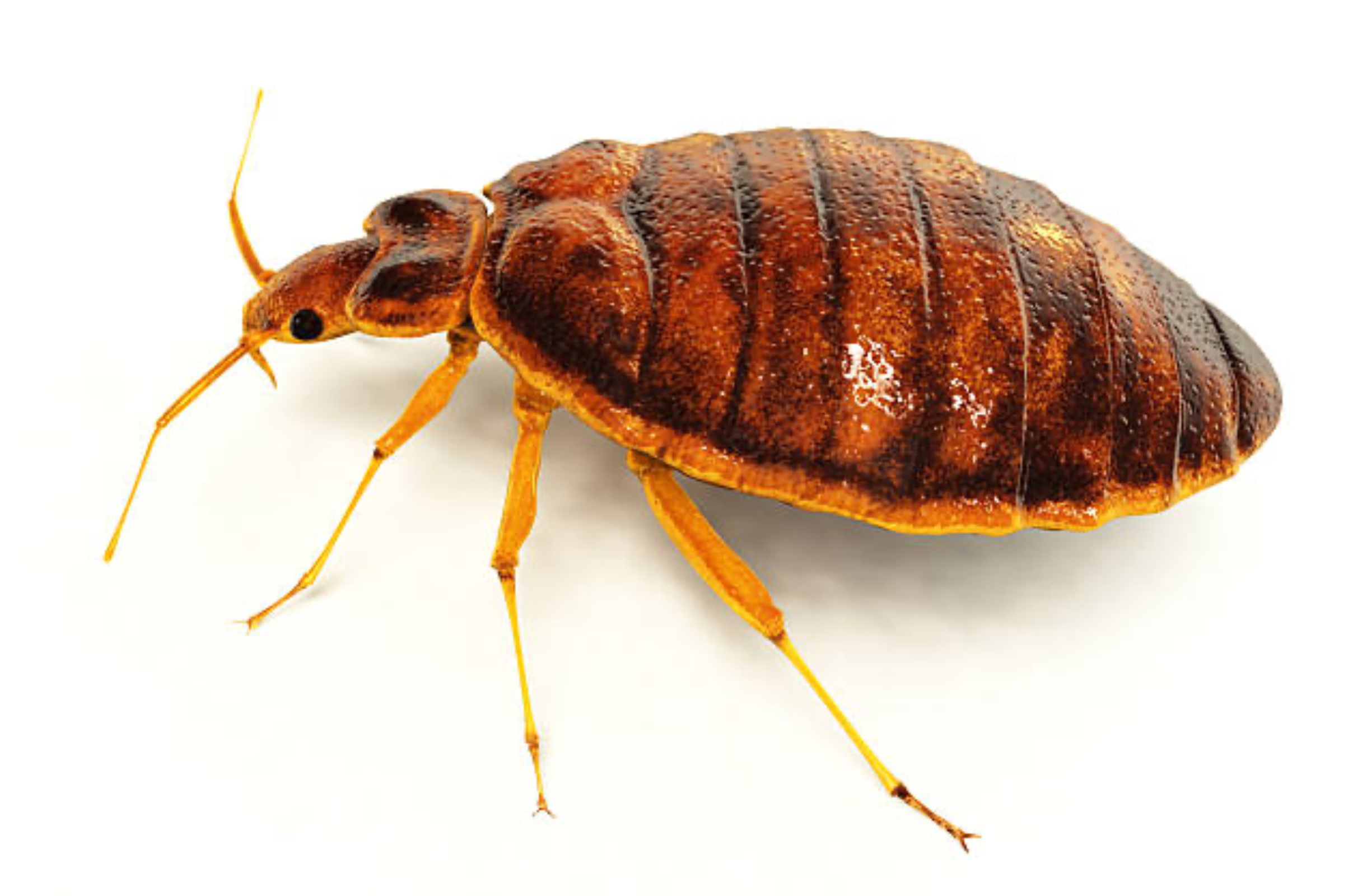Finding pests in your home is never fun, but finding bed bugs in your sleeping space is a nightmare come true. Identifying bed bugs early on can save you the hassle of an at home infestation or even bringing them back into your home from a vacation. Infinite is here to help you become a bed bug identifier expert!
Bed bugs (Cimex lectularius) are tiny, reddish-brown insects that feed on the blood of humans and animals. Primarily nocturnal, they hide during the day in cracks and crevices near their food source. Though not known to transmit diseases, their bites can cause itching, allergic reactions, and psychological stress.

Physical Characteristics
- Size: Adult bed bugs are about the size of an apple seed, measuring 5-7 mm in length.
- Shape: They have flat, oval-shaped bodies. After feeding, they become swollen and elongated.
- Color: Unfed bed bugs are brownish; after feeding, they turn reddish-brown.
- Nymphs: Juvenile bed bugs are smaller, lighter in color, and translucent. They shed their exoskeleton five times before reaching maturity.
Signs of Infestation
- Bites: Bed bug bites often appear as small, red, itchy welts, typically in a line or cluster. However, not everyone reacts to bites, so this is not a definitive sign.
- Blood Stains: Tiny blood stains on sheets or pillowcases can indicate bed bug feeding.
- Fecal Spots: Small, dark spots (about the size of a pinhead) on mattresses, sheets, or walls are bed bug excrement.
- Eggs and Shells: Bed bug eggs are tiny, white, and about 1 mm in size. You might also find shed skins from nymphs.
- Odor: A large infestation can produce a musty, sweet smell due to bed bug pheromones.
Places to Look
Bed bugs prefer to stay close to their food source but will travel if necessary. Check these common hiding spots:
- Mattresses and Box Springs: Inspect seams, tags, and underneath.
- Bed Frames and Headboards: Look in joints and crevices.
- Furniture: Examine cushions, seams, and zippers.
- Baseboards and Wall Cracks: Check for tiny cracks in walls and behind baseboards.
- Electrical Outlets and Picture Frames: Inspect behind these areas.
Preventing Infestations
- Regular Inspections: Frequently check sleeping areas and furniture for signs of bed bugs.
- Reduce Clutter: Clutter provides hiding places for bed bugs.
- Use Protective Covers: Encase mattresses and box springs.
- Be Cautious with Secondhand Furniture: Inspect used furniture carefully before bringing it into your home.
- Travel Smart: When staying in hotels, check the bed and furniture for signs of bed bugs. Keep luggage off the floor and bed.
Bed bugs are notoriously difficult to eliminate without professional help. If you suspect a bed bug infestation, act quickly. Are you located in Southwest Florida? Contact us for a thorough inspection and effective treatment. Our experienced technicians use the latest methods and technology to ensure your home is bed bug-free. What bugs you, bugs us!


